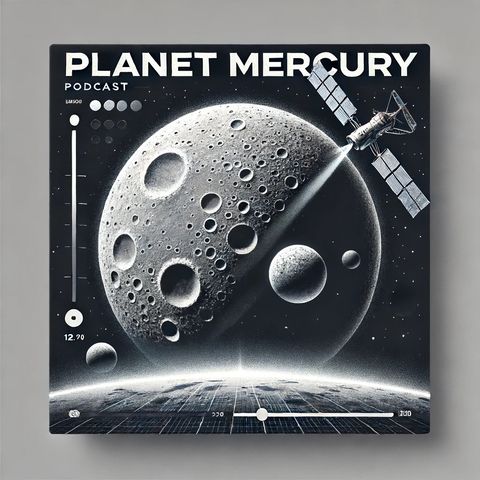Planet Mercury A World Forged in Fire and Ice

Download and listen anywhere
Download your favorite episodes and enjoy them, wherever you are! Sign up or log in now to access offline listening.
Planet Mercury A World Forged in Fire and Ice
This is an automatically generated transcript. Please note that complete accuracy is not guaranteed.
Description
Mercury is the smallest planet in our solar system and the one closest to the Sun. Here are some key facts and characteristics about Mercury:Basic Characteristics - Size: Mercury has...
show more- Size: Mercury has a diameter of about 4,880 kilometers (3,032 miles), making it slightly larger than Earth's Moon.
- Orbit: It has the shortest orbit around the Sun of all the planets, taking only 88 Earth days to complete one revolution.
- Day Length: Despite its quick orbit, a single day on Mercury (one full rotation on its axis) takes 59 Earth days.
- Surface: Mercury's surface is similar to that of the Moon, covered with craters from collisions with meteoroids and comets. It also has large smooth plains and high cliffs.
- Temperature: Due to its proximity to the Sun, surface temperatures on Mercury can reach up to 430°C (800°F) during the day. However, because it has almost no atmosphere to retain heat, nighttime temperatures can drop to -180°C (-290°F).
- Composition: Mercury is composed primarily of rock and metal, with a large iron core that accounts for about 75% of the planet's diameter. This iron core generates a magnetic field, although it is much weaker than Earth's.
- Thin Exosphere: Mercury has a very thin atmosphere, called an exosphere, composed mainly of oxygen, sodium, hydrogen, helium, and potassium. This exosphere is not stable and is constantly being replenished by solar wind and micrometeorite impacts.
- Space Missions:
- Mariner 10 was the first spacecraft to visit Mercury, conducting three flybys in 1974-1975 and mapping about 45% of the planet's surface.
- MESSENGER (MErcury Surface, Space ENvironment, GEochemistry, and Ranging) orbited Mercury from 2011 to 2015, providing detailed maps and data about its surface, composition, and magnetic field.
- BepiColombo is a joint mission by the European Space Agency (ESA) and the Japan Aerospace Exploration Agency (JAXA) launched in 2018. It aims to study Mercury's surface and magnetic field in even greater detail once it arrives in 2025.
- Caloris Basin: One of the largest impact basins in the solar system, Caloris Basin, is located on Mercury. It is about 1,550 kilometers (960 miles) in diameter.
- Ice at the Poles: Despite its scorching temperatures, radar observations have detected ice in permanently shadowed craters at Mercury's poles, where temperatures remain extremely cold.
- Relativity Test: Mercury's orbit provided a crucial test for Einstein's theory of general relativity. The slight shift in Mercury's orbit (perihelion precession) could not be explained by Newtonian physics alone and was accurately predicted by Einstein's equations.
Information
| Author | QP-4 |
| Organization | William Corbin |
| Website | - |
| Tags |
Copyright 2024 - Spreaker Inc. an iHeartMedia Company
